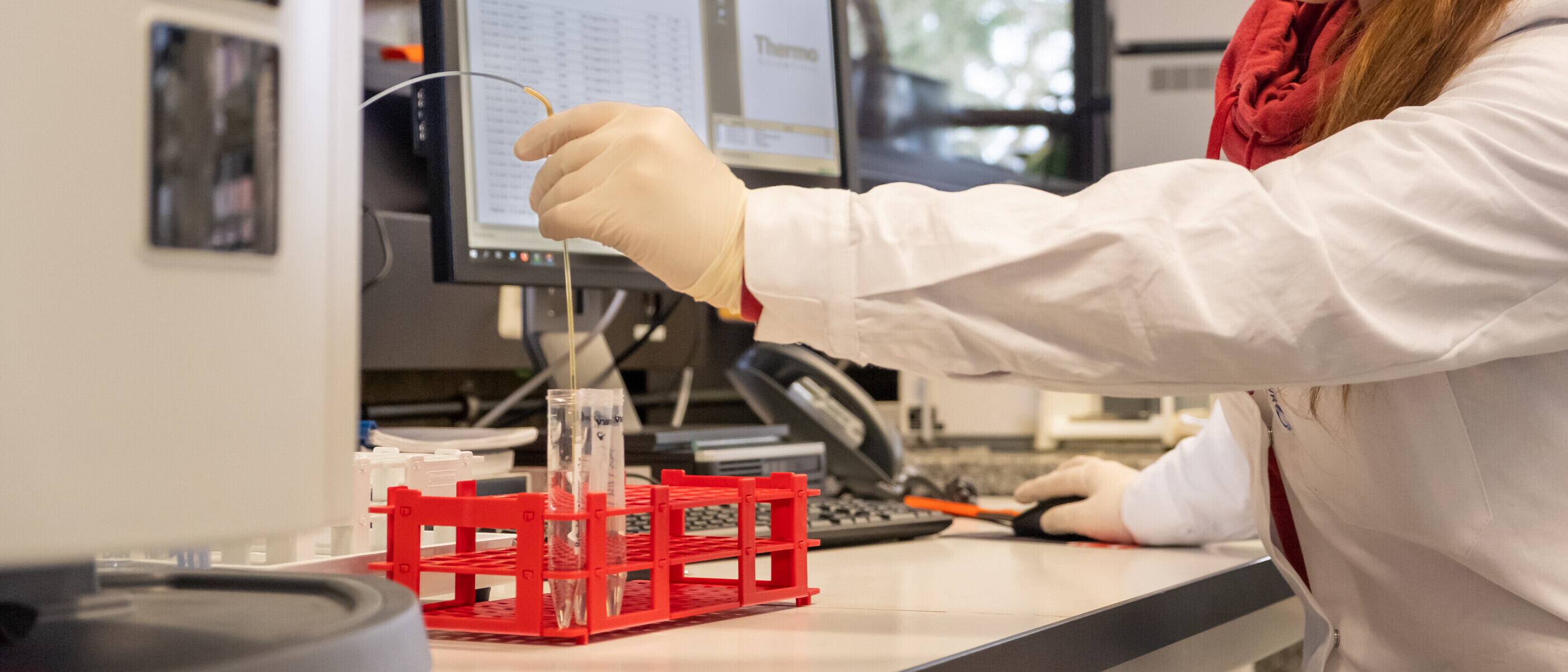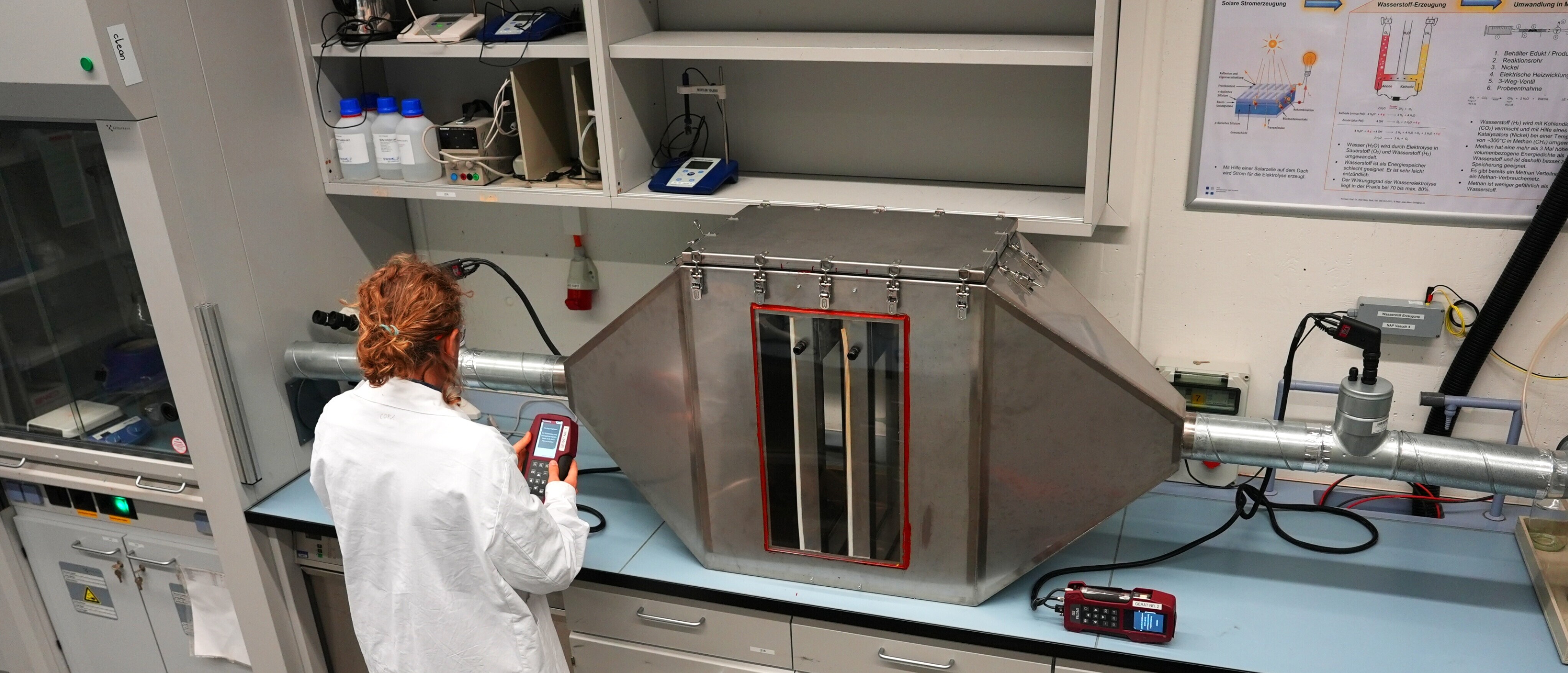Infrastructure
The Competence Centre for Mathematics and Natural Sciences at the Eastern Switzerland University of Applied Sciences in Rapperswil has a well-equipped laboratory infrastructure that enables it to carry out a wide range of research and development projects in the fields of environmental, energy and process engineering.
Test facilities
Experiments are carried out on a small to pilot scale in the experimental area. We produce contaminated air, polluted water and soil or obtain them from our project partners. We use these samples to develop new processes and then investigate how we can optimise cleaning. The infrastructure available for carrying out tests includes:
- Standard laboratory infrastructure
- Various chapels for setting up different pilot plants on a laboratory scale
- Gas mixing unit for the production of contaminated air
- Test reactor for various exhaust air purification processes
- Flocculator (Jar Test) for the assessment and optimisation of flocculation processes
Water and solids analyses
In the analytics area, the success of the processes analysed is measured using our own analytical equipment. For analysing liquid and solid samples, the usual basic equipment of a chemistry laboratory is available, such as pH meters, conductivity meters, titrators, shakers and drying ovens. We can also analyse the following substances and substance properties in liquid and solid samples:
- Heavy metals (ICP-OES optical emission spectrometry with inductively coupled plasma)
- Various dissolved substances (photometer)
- Ions in aqueous samples (ion chromatograph)
- Dissolved organic carbon compounds (TOC analyser)
- Mercury
- Turbidity
- Dissolved oxygen in aqueous samples
Gas analyses
We can measure the following parameters in gases and air streams using our own analysers:
- Total hydrocarbon (FID flame ionisation detector, PID photoionisation detector)
- Methane CH4 (FID flame ionisation detector)
- Odour (olfactometer)
- Ammonia NH3
- Nitrogen oxides (NO, NO2, NOx)
- Hydrogen sulphide H2S
- Ozone O3
- Flow velocity, static and barometric pressure
- Temperature, relative humidity
Contact
Prof. Dr. Jean-Marc Stoll
KMN Kompetenzzentrum für Mathematik und Naturwissenschaften Professor, Fachbereichsleiter Angewandte Chemie
+41 58 257 43 11 jeanmarc.stoll@ost.ch


![[Translate to English:] Entwicklung und Optimierung von chemischen Verfahren zur Wasser-, Abwasser-, Abluft- und Feststoffbehandlung](/fileadmin/dateiliste/3_forschung_dienstleistung/3.2_interdisziplinaere_themen/3.2.6_kmn_kompetenzzentrum_mathematik_und_naturwissenschaften/angewandte_chemie/chemielabor_startbild.jpg)


